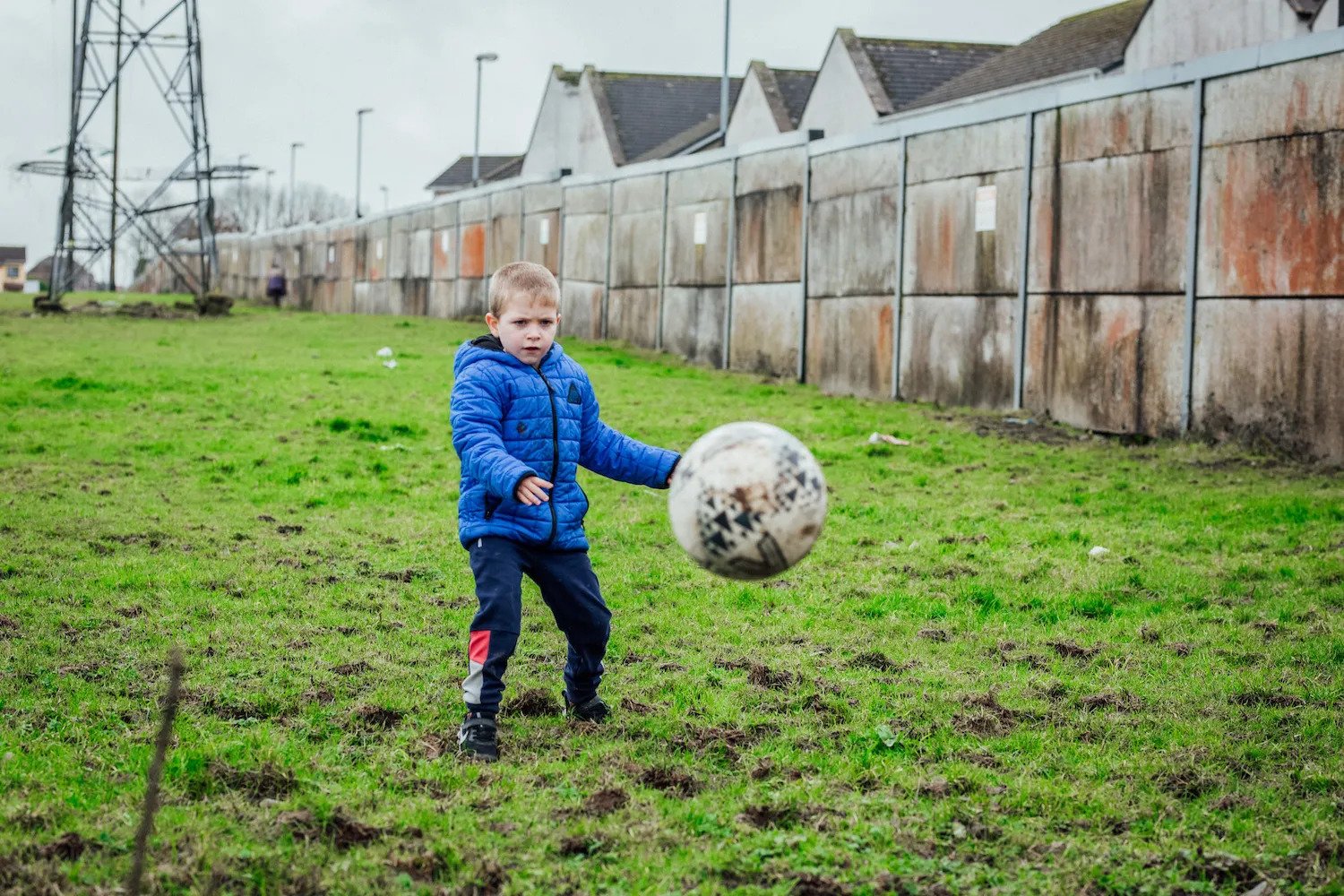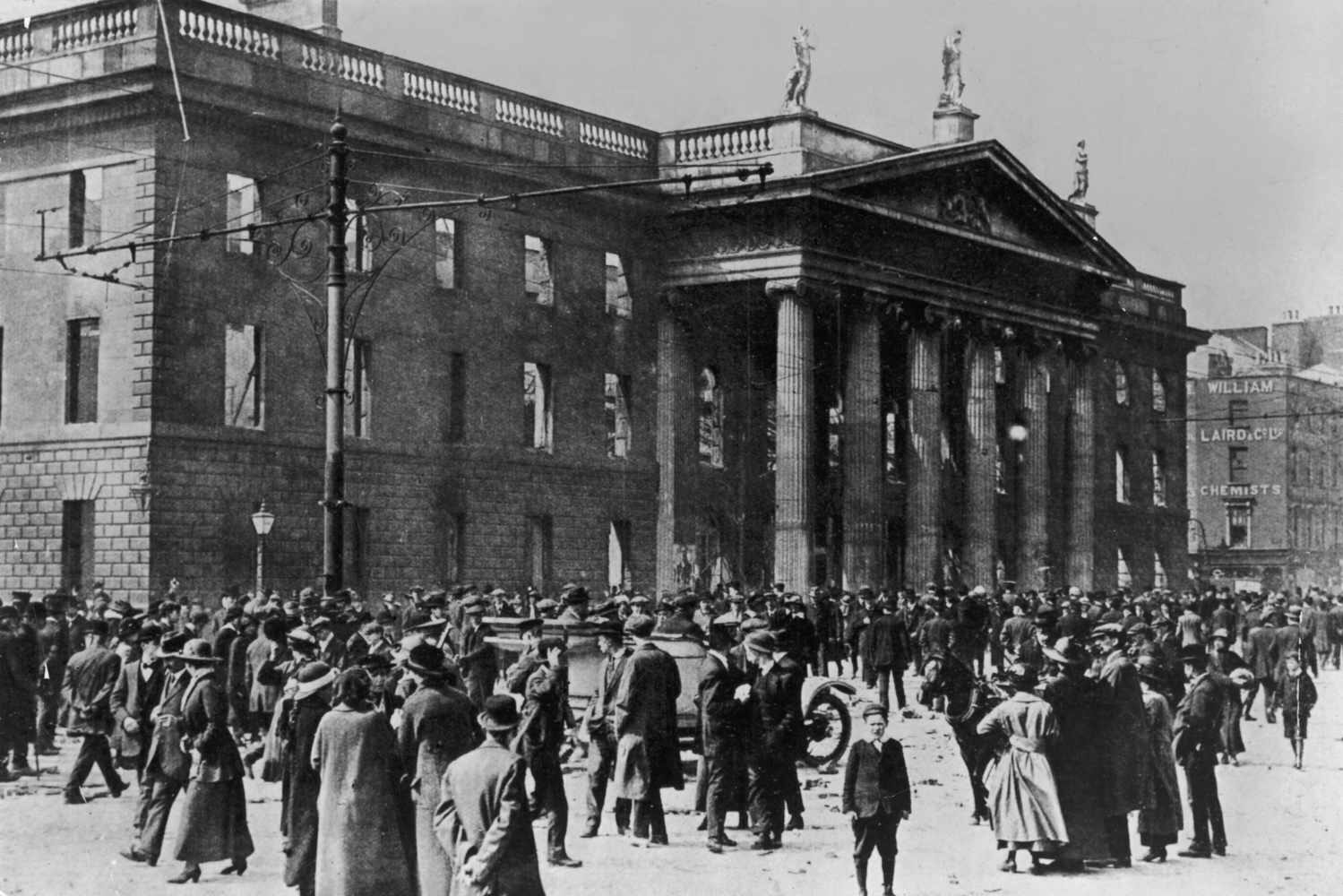By Louie Lyons.
Let’s call her Aisling, as that’s as good a name as any and better than some. Aisling, a mother of two, is standing in the doorway of her 2-bedroom pebbledash house. As she looks out she knows that all around her bustles a vibrant Limerick. A new Limerick. A Limerick that’s won 3 of the last 4 hurling All-Ireland Championships. A Limerick that’s created 18,000 new jobs in the past decade. A Limerick that was a potential cultural capital of Europe in 2020, a far cry from her previous reputation as the picaresque “Stab City” and “murder capital” of Europe as it was labelled in 2008. Limerick has gone through a major transformation in the recent years. For this young mother, however, the effects of this change are only visible from her confinement behind a 10-foot high grey wall.
An imprisoning wall, plastered with fading but still garish Danger signs, encircles her estate. A relic of an outdated form of social policy that sought to ghettoise an entire community for the behaviour of the few, the wall perpetuates stigma and has led to a housing estate being neglected and left behind in this regeneration of Limerick. For standing, like some discarded Soviet architectural statement about the limits of freedom, between the Aisling and the fruits of this new Limerick is the “Great Wall of Moyross.”
Residents in Moyross have called for the removal of the wall which they say has for years confined and stigmatised their community. Residents of the Delmege park housing estate argue that the wall has a humiliating and dehumanising effect on them and their community. The wall separates the housing estate of about 120 homes from the student accommodation at the University of Limerick and in a mapping survey by the University of Limerick, they admit that “to this day Moyross has a wall segregating it from more affluent regions of Limerick City”. A petition aimed to force Limerick County Council to take action and remove the wall received more than 150 signatures.
The case being made by residents is that the wall perpetuates the image of Moyross as a dangerous area and then that image is used to justify the existence of the wall. In particular, resident activists point to the impact of the wall’s danger signs on the psychology of the children living within its confines, highlighting that behind the “Great Wall of Moyross” children are being born guilty. The Irish government has a controversial history of coercive confinement where those deemed undesirable are removed from plain sight, regardless of their rights as citizens, and the situation in Moyross is a poignant attestation to this.
This campaign comes after the success of a similar one in the same area. The #BUILDOURROAD campaign, seen by many as a start to opening up Moyross. The road in question was the Coonagh-Knockalisheen road. The Minister for Transport, Eamon Ryan, denied the funding required to complete the road which was met with critical backlash from those in the area with the Moyross parish priest calling for the Minister to resign over the affair. The road had been an integral part of a planned regeneration project for the area since 2007. In February of 2021, however, residents in Moyross successfully demonstrated the power of their desire for more inclusivity for their area as they managed to reverse the ministerial decision and work on the road resumed. The building of the Coonagh-Knockalisheen road proved a beneficial step in opening up a community long isolated from the world around it.
As well as sociological and psychological impacts, further complaints about the wall call attention to its major physical issues. Videos circulating online show the ease with which you can crumble the wall’s rotting wooden supports in your hand. Some fear that the precarious structure of the wall may cause serious physical harm to those who must pass by it on a regular basis or to children who play near it. The wall also proves an obstacle for travel causing the length of common journeys to balloon. The wall provides few gaps and none with a size capable of catering to someone in a wheelchair, someone with a bike, someone with a pram, etc.
The wall is a symbol of the greater failings of the people of Limerick by successive Irish governments but could be used as a means by which the floundering regeneration project in the area could be saved.
For some context, Moyross in the mid-2000s was insulated from the surrounding area which provided criminal empires the perfect environment to thrive. The area became known for debilitating anti-social behaviour, unemployment five times the national average, and gang feuds. Gardaí cars petrol bombed, houses burnt out, and in particular, one high profile arson attack that left two children badly burnt in a car, grabbing the attention of the national media. Moyross, home to Noel Hogan of The Cranberries and rugby player Keith Earls, but long abandoned and forsaken by the services charged with its protection, was thrust into the media spotlight.
To combat the situation in Moyross, a two-pronged approach was instituted. Operation Anvil saw Gardaí flood the area, including a new Moyross-specific task force, patrolling armed Gardaí on horseback and on foot, undercover Gardaí, and even air support. In a potential plot twist, this Reagan-esque, war-on-drugs approach worked. By all measures, crime in Moyross is down. Murders, theft, arson have all fallen drastically since their peak years prior. However, despite this, residents continued to report worsening conditions and feelings of stigmatisation which speaks to the second prong of the government’s plan which Limerick’s Mayor, Daniel Butler, said had “failed”.
A regeneration project of the area was promised, which was originally envisioned as a 3 billion euro plan but was downscaled to roughly 400 million due to the financial crash in 2007. The project was intended to tackle issues in housing, crime, antisocial behaviour, social exclusion, and unemployment but has failed to follow through on many of its promises.
The failures of the regeneration project can be elucidated in a number of ways but one need only compare the number of houses demolished, nearly 1200, with the number of houses built, approximately 300, for the clearest example. Furthermore, the finances of regeneration have been subject to scandal. When asked for details on the finances of the project by Sarah Kiely, Fine Gael councillor, Regeneration officers were unable to provide the answers to questions such as where money had been spent and how much. In an April 2021 interview with NewsTalk, family support worker, Jason Craig, said “at the moment [people] just don’t trust a lot of these services”. This is where to Moyross wall comes back into play.
The wall acts as a physical barrier and yet simultaneously the wall is the symbolic barrier holding back regeneration. The will to buy-in to regeneration is high in Moyross. Those engaging in criminal acts in Moyross are a clear minority and the majority wish to follow the renewal that the rest of Limerick is experiencing evidenced by the road they got built through determination and activism. However, so long as the wall stands, regeneration will only be based on bad-faith promises and we will be left with a typical government ‘hamesing’ of the situation. Changing Moyross requires the population to trust the government’s plan for the area but what trust is being shown the other way when the people of Moyross plead to be released from this harmful confinement and the government chooses not to listen.


